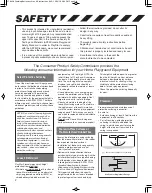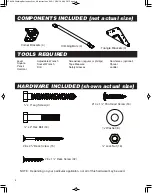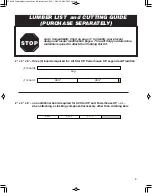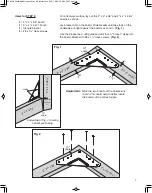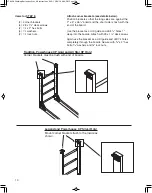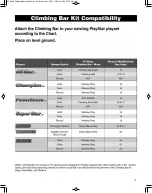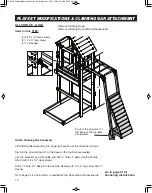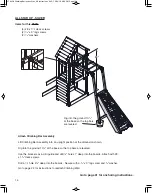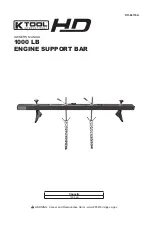
2H
2H
Denotes Use Zone with Protective Surfacing
Use Zone for Single-Axis Swings
6 ft.
6 ft.
The Consumer Product Safety Commission provides the
following consumer information for your Home Playground Equipment
• This product is intended for single-family residential
use only, by children ages two to ten and a maxi-
mum weight of 105 pounds. Any recommendation
over 10 years of age or 105 pounds exceeds the
upper limits specified in the American Society for
Testing and Materials (ASTM) Home Playground
Safety Standard. In order for PlayStar to comply
with the ASTM Standard, we cannot recommend
anyone above these limits.
• It is a misuse of this product when installed or used
in places of public assembly such as schools or parks.
Select Protective Surfacing
Poured-In-Place Surfaces or
Pre-Manufactured Rubber Tiles
Placement
One of the most important things you can
do to reduce the likelihood of serious head
injuries is to install shock-absorbing
protective surfacing under and around
your play equipment. The protective
surfacing should be applied to a depth
that is suitable for the equipment height in
accordance with ASTM F1292. There are
different types of surfacing to choose from;
whichever product you select, follow these
guidelines:
NOTE: Do not install home playground
equipment over concrete, asphalt, or
any other hard surface. A fall onto a
hard surface can result in serious
injury to the equipment user. Grass
and dirt are not considered protective
surfacing because wear and
environmental factors can reduce their
shock absorbing effectiveness.
Carpeting and thin mats are generally
not adequate protective surfacing.
Ground level equipment -- such as a
sandbox, activity wall, playhouse or
other equipment that has no elevated
play surface -- does not need any
protective surfacing.
• Maintain a minimum depth of 9 inches of
loose-fill materials such as wood mulch /
chips, engineered wood fiber (EWF), or
shredded/recycled rubber mulch for
PlayStar Playsets require fall-height
protection from eight feet.
equipment up to 8 feet high. NOTE: An
initial fill level of 12 inches will compress
to about a 9-inch depth of surfacing over
time. The surfacing will also compact,
displace, and settle, and should be
periodically refilled to maintain at least a
9-inch depth.
• Use containment, such as digging out
around the perimeter and/or lining the
perimeter with landscape edging. Don’t
forget to account for water drainage.
• Check and maintain the depth of the
loose-fill surfacing material. To maintain
the right amount of loose-fill materials,
mark the correct level on play equipment
support posts. That way you can easily
see when to replenish and/or redistribute
the surfacing.
•
Do not
install loose fill surfacing over
hard surfaces such as concrete or asphalt.
This height should be equal to or greater
than the
fall height
- vertical distance
between a designated play surface
(elevated surface for standing, sitting, or
climbing)
and the protective surfacing
below - of your play equipment.
• Check the protective surfacing frequently
for wear.
• Follow the instructions provided, do not alter its
design in any way.
• Construction requires at least two adults capable of
heavy lifting.
• Thoroughly read all safety instructions before
beginning.
• Children must remain clear of construction site until
this product is properly installed and ready for use.
• Save these instructions in the event the
manufacturer has to be contacted.
Proper placement and maintenance of
protective surfacing is essential.
Be sure to;
• Extend surfacing at least 6 feet from the
equipment in all directions.
• For to-fro swings, extend protective
surfacing in front of and behind the
swing to a distance equal to twice the
height of the top bar from which the
swing is suspended.
SAFETY
Loose-Fill Materials
You may be interested in using surfacing
other than loose-fill materials -- like rubber
tiles or poured-in-place surfaces.
• Installations of these surfaces generally
require a professional and are not
“do- it-yourself” projects.
• Review surface specifications before
purchasing this type of surfacing. Ask the
installer/manufacturer for a report showing
that the product has been tested to the
following safety standard: ASTM F1292
Standard Specification for Impact
Attenuation of Surfacing Materials within
the Use Zone of Playground Equipment.
This report should show the specific
height for which the surface is intended
to protect against serious head injury.
2
LT 6456 Climbing Bar Instructions_AS Instructions '04 R1 2/24/10 3:04 PM Page 2


